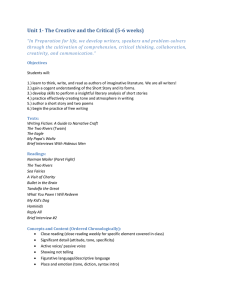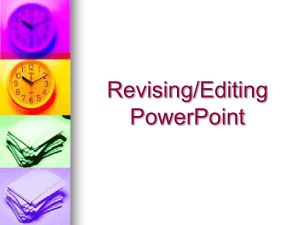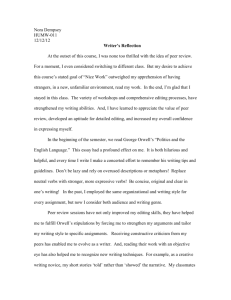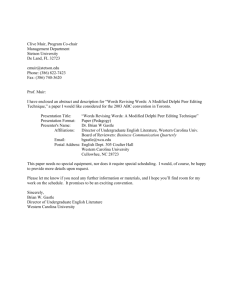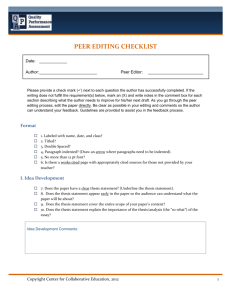Issue: Peer editing
advertisement
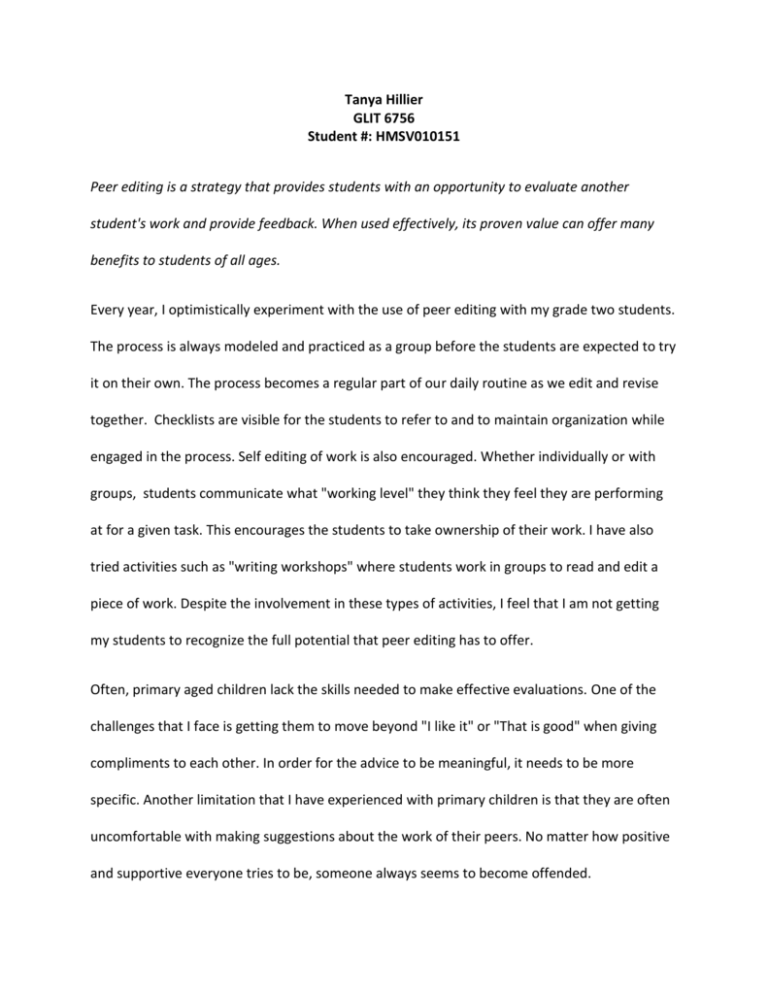
Tanya Hillier GLIT 6756 Student #: HMSV010151 Peer editing is a strategy that provides students with an opportunity to evaluate another student's work and provide feedback. When used effectively, its proven value can offer many benefits to students of all ages. Every year, I optimistically experiment with the use of peer editing with my grade two students. The process is always modeled and practiced as a group before the students are expected to try it on their own. The process becomes a regular part of our daily routine as we edit and revise together. Checklists are visible for the students to refer to and to maintain organization while engaged in the process. Self editing of work is also encouraged. Whether individually or with groups, students communicate what "working level" they think they feel they are performing at for a given task. This encourages the students to take ownership of their work. I have also tried activities such as "writing workshops" where students work in groups to read and edit a piece of work. Despite the involvement in these types of activities, I feel that I am not getting my students to recognize the full potential that peer editing has to offer. Often, primary aged children lack the skills needed to make effective evaluations. One of the challenges that I face is getting them to move beyond "I like it" or "That is good" when giving compliments to each other. In order for the advice to be meaningful, it needs to be more specific. Another limitation that I have experienced with primary children is that they are often uncomfortable with making suggestions about the work of their peers. No matter how positive and supportive everyone tries to be, someone always seems to become offended. When helping with corrections during the peer editing process, I have often tried to motivate the students by looking for one thing at a time. For example, if helping with the correction of punctuation, I tell them that they are on "punctuation patrol". The students appear excited about this responsibility, but I often witness things being corrected that were not mistakes. When this happens, the process becomes discouraging and I begin to wonder "Is it worth it?" Grouping is also a critical part in making peer editing successful. To accommodate the many diverse levels of learning , flexible grouping can be used. This way students can be grouped and regrouped according to need. Finding the right combinations of students is essential for peer editing to be truly beneficial. If not, it often becomes a "blind leading the blind" situation. I recognize the worth that peer editing has to offer. It provides opportunities for my students to help each other as well as to learn from each other. The question for me is "What else can I do to help my students appreciate the value of peer editing ?"
